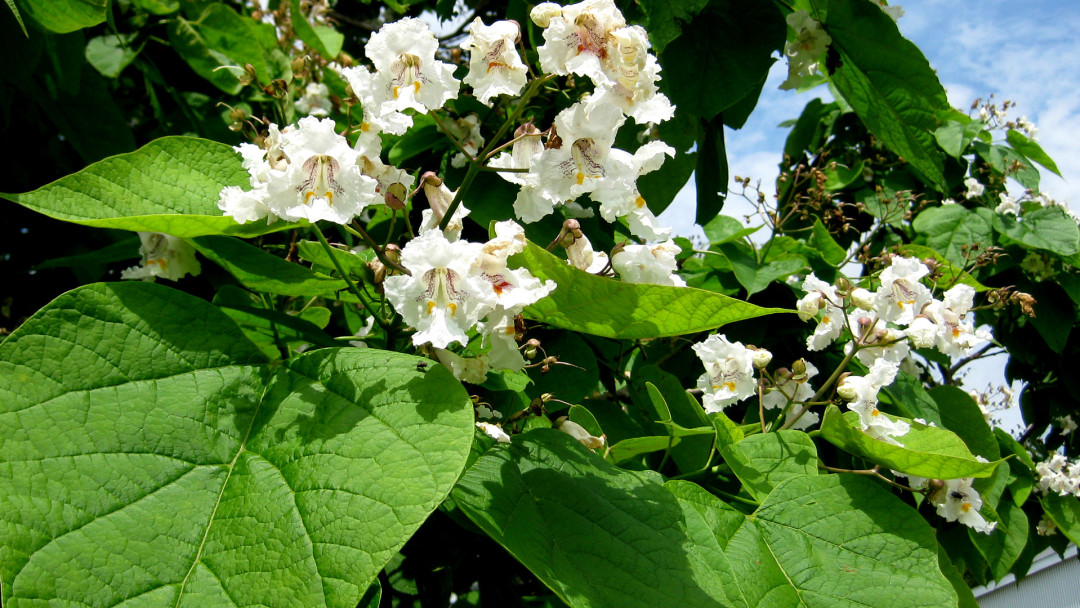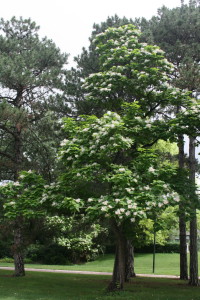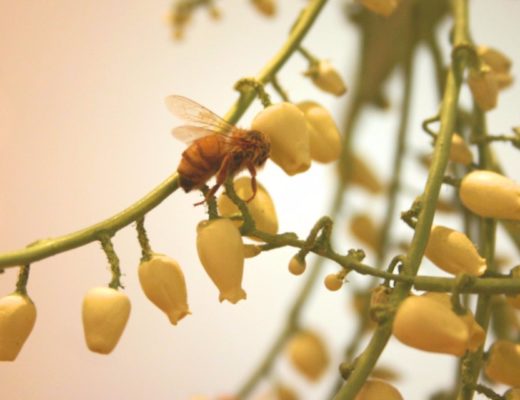The northern catalpa is a tree full of unique character. From its trumpet shaped flowers—sharing a resemblance to elephant ears—to its cigar-like pods that drape on the tree like tinsel, to the foot long leaves and twisted trunk, this tree is whimsical to say the least. Aside from its distinct appearance, it is also amongst the best shade trees to plant for it’s a hardiness, fast growth and extensive canopy. There is however a price to pay for admiring such a beauty, it requires a bit of cleanup once the flower petals, leaves and seed pods drop, and it is also a popular site for the catalpa sphinx (or moth) to lay eggs on.
The catalpa sphinx only lay their eggs on the leaves, twigs or branches of catalpa trees. It is both a curse and a blessing. Under normal circumstances they don’t pose any harm because parasitic wasps and flies feed off the three inch sphinx, sustaining a healthy environment. But at times their numbers can grow and the larvae will feed on the leaves, stripping a tree bare. You also don’t want to be caught standing under a catalpa tree with high larvae numbers, the falling frass—larvae excrement—is said to sound like a drizzling rain.
Here are a few things to note if you’re considering adding a catalpa to your yard.
Environmental conditions:
- Does best in deep, rich loam and moist soil, but is tolerant of various soil conditions.
- Fast growing tree, growing up to three feet a year and reaching up to 60 feet at maturity.
- Prefers full sun but tolerates partial shade.
- Tolerates a wide range of moisture including some flooding, and extremely hot, dry conditions.
- Has large, white, trumpet shaped flowers that bloom in the summer and are somewhat fragrant, although it won’t begin to flower until seven years after first planted.
- Has large heart/spear shaped leaves reaching up to 12 inches in length and 4-8 inches wide. The larvae that feed off the leaves are popular as a fishing bait.
- NOTE: plant away from sidewalks, as the leaves and flower petals can be slippery after they fall.
- Produces bean-like pods 8-20 inches long that split open when ripe, releasing seeds.
Tag us in a photo with a northern catalpa!




